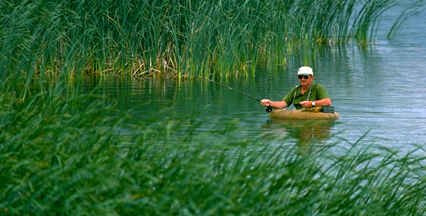Understanding the key differences between saltwater and freshwater fishing can help anglers choose the right techniques, gear, and locations for a successful fishing experience. Saltwater fishing often involves larger and more powerful fish, requiring heavier tackle and robust equipment. Freshwater fishing offers a diverse range of species and techniques, suitable for various skill levels. Knowing these differences can enhance your fishing strategy and enjoyment.
Species Diversity and Size
Saltwater fishing targets a wide variety of species, including large game fish such as marlin, tuna, and sailfish, as well as inshore species like redfish, snook, and flounder. These fish are often larger and more powerful, providing thrilling battles. Freshwater fishing offers a diverse range of species, including bass, trout, catfish, and panfish. While some freshwater species can be quite large, they generally do not reach the sizes of saltwater game fish.
Gear and Equipment
Saltwater fishing requires heavier and more durable gear to handle the strength and size of ocean fish. Rods and reels are designed to withstand corrosion from saltwater and the intense pressure of big fish. Braided and heavy monofilament lines are commonly used. Freshwater fishing gear is typically lighter and more versatile, suitable for a range of species and techniques. Ultralight to medium-heavy rods and reels are popular, with monofilament, fluorocarbon, and light braided lines.
Fishing Techniques
Saltwater fishing techniques vary depending on the target species and location. Techniques include trolling, casting, jigging, and bottom fishing. Inshore and offshore fishing offer different challenges and require specific approaches. Freshwater fishing techniques are equally diverse, including fly fishing, spin fishing, and baitcasting. Techniques such as topwater fishing, finesse fishing, and using live bait are commonly employed in freshwater environments.

Locations and Accessibility
Saltwater fishing can be done from the shore, piers, jetties, or boats, with offshore fishing requiring larger vessels and specialized equipment. Coastal areas, reefs, and open ocean provide diverse fishing opportunities. Freshwater fishing is accessible in lakes, rivers, ponds, and reservoirs. Shore fishing, wading, and using small boats or kayaks are common methods. Freshwater fishing spots are often more accessible and convenient for casual outings.
Regulations and Conservation
Both saltwater and freshwater fishing are subject to regulations aimed at conserving fish populations and habitats. Saltwater fishing regulations often include size and bag limits, seasonal closures, and gear restrictions to protect vulnerable species and ecosystems. Freshwater fishing regulations vary by region and may include limits on certain species, catch-and-release requirements, and restrictions on specific fishing methods. Understanding and adhering to these regulations is crucial for sustainable fishing practices.
Environmental Factors
Environmental conditions play a significant role in both saltwater and freshwater fishing. Tides, currents, and water temperature are critical factors in saltwater fishing, influencing fish behavior and feeding patterns. Freshwater fishing is affected by factors such as water temperature, clarity, and seasonal changes. Understanding these environmental factors and how they impact fish activity can improve your fishing strategy and success.
Enjoying Both Worlds
Many anglers enjoy the unique challenges and rewards of both saltwater and freshwater fishing. Each offers its own set of experiences, from the adrenaline rush of battling a big game fish in the open ocean to the serene satisfaction of catching trout in a mountain stream. Exploring both environments can broaden your fishing skills and provide diverse and memorable experiences.
By understanding the key differences between saltwater and freshwater fishing, anglers can make informed decisions about their gear, techniques, and locations, enhancing their overall fishing experience.
Image: TPW





